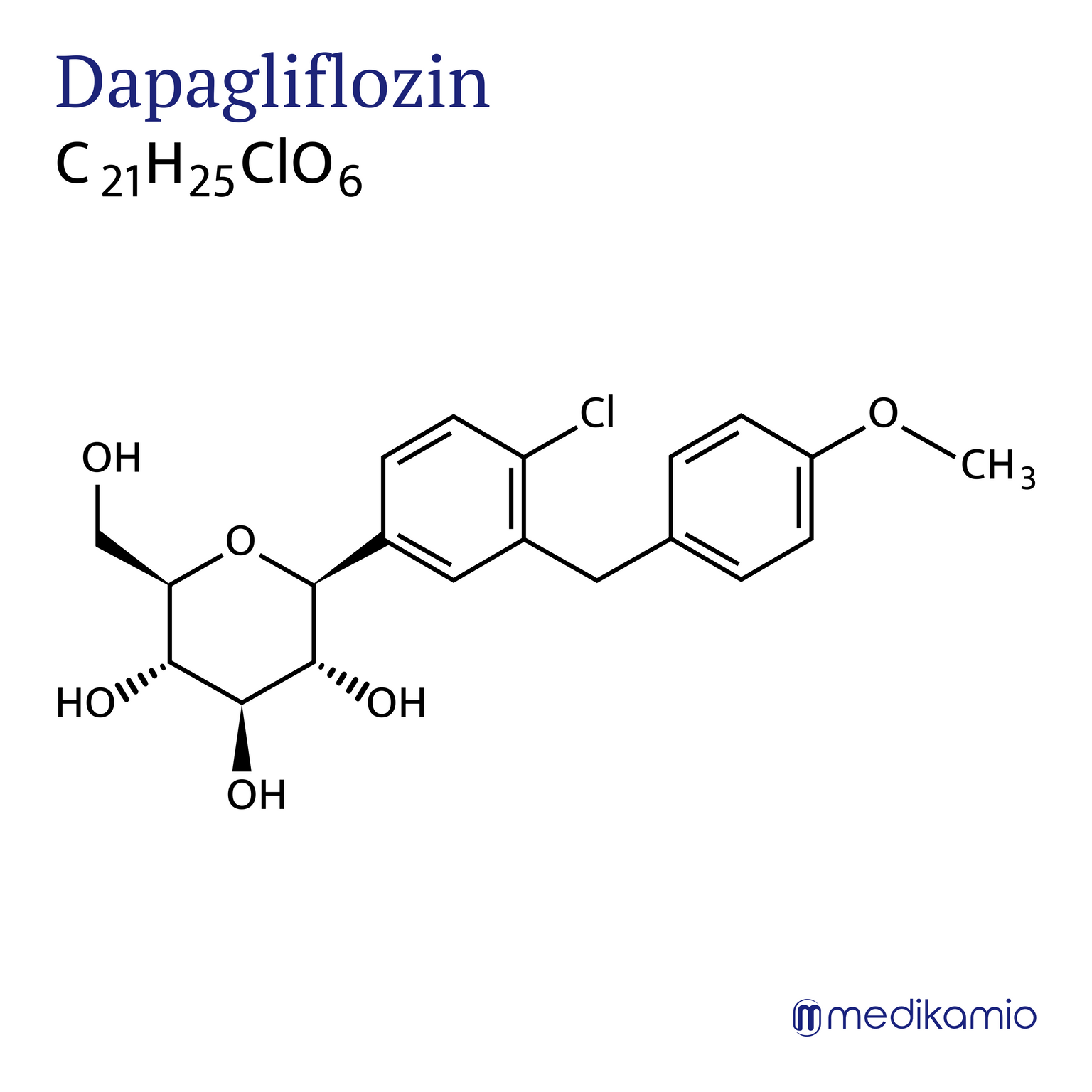Effect
Dapagliflozin has a blood sugar-lowering effect. It inhibits the sodium-glucose cotransporter 2 competitively, reversibly and selectively. Competitive means that the concentration of dapagliflozin must be higher than that of glucose in order to occupy the receptor. Glucose and dapagliflozin therefore compete for the receptor (competitive). Reversible means that the effect can be reversed and selective means that dapagliflozin can only occupy this one receptor.
SGLT2 is located in the nephron, the smallest functional unit of the kidney, where it ensures the reabsorption of sodium ions and glucose into the blood. By inhibiting it, more sodium ions and glucose are excreted in the urine, which leads to a lower blood glucose level. 90% of the reabsorption of glucose in the kidneys takes place via SGLT2. Importantly, unlike other antidiabetic drugs, dapagliflozin is insulin-independent, meaning that no insulin is needed to lower blood glucose levels. With dapagliflozin you also lose weight unintentionally.
The excretion of sodium via the urine also leads to more fluid (water) being excreted from the body. This in turn leads to a decrease in blood pressure.
The great advantage of dapagliflozin is that it is very difficult for people with type 2 diabetes to suffer hypoglycaemia when taking it, as the blood sugar level is not actively lowered by insulin, but only the absorption of sugar into the bloodstream is prevented. This means that life-threatening hypoglycemia (coma due to hypoglycemia) can only occur very rarely.
The bioavailability of dapagliflozin - i.e. the percentage of the active substance available in the blood - is 78%. The half-life, i.e. the time the body needs to excrete half of the active substance, is approx. 13 hours. The maximum plasma concentration (Cmax), i.e. the maximum concentration of the active ingredient in the blood plasma (liquid cell-free part of the blood), occurs after 1 hour of fasting. If you have eaten beforehand, the maximum plasma concentration is only reached after 2 hours.



